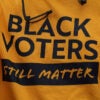The United States Constitution is the oldest written constitution still in use.
A little more than 225 years ago, there was a meeting of the greatest political minds that had ever been assembled. Each American colony sent its brightest citizens to revise the failing Articles of Confederation.
The Framers of the Constitution were well read in history, political philosophy, and law. They had deep disagreements on the role and structure of government. Meeting in secret, the Framers were able to debate and freely discuss these issues, which allowed them to make compromises that would have labeled them as “flip-floppers” if made in the public forum.
The Daily Signal depends on the support of readers like you. Donate now
As a result of those compromises, the U.S. Constitution provides for a limited government, separation of powers, checks and balances, and federalism. This was a grand experiment in government.
The U.S. Constitution has been such a success that other nations are continually moving toward written constitutions.
When asked whether Egypt should model its constitution after that of the U.S., Supreme Court Justice Ruth Bader Ginsburg said, “I would not look to the U.S. Constitution, if I were drafting a constitution in the year 2012.”
This prompts some questions. Is the U.S. Constitution a model, a resource, or an outlier? What effect has the U.S. Constitution had on recently adopted constitutions of other nations?
Join us this Thursday at noon for the continuation of our seven-part Preserve the Constitution lecture series. Our keynote speaker will be the Honorable Dr. István Stumpf, Justice of the Supreme Constitutional Court of Hungary. Our panelists will include Jeremy Rabkin of the George Mason University College of Law; Ron Rotunda, Doy and Dee Henley Chair and Distinguished Professor of Jurisprudence at the Chapman University School of Law; and Emilia Versteeg, associate professor at the University of Virginia School of Law.
The event will be hosted by Edwin Meese III, chairman of the Center for Legal and Judicial Studies at The Heritage Foundation and former Attorney General of the United States under President Ronald Reagan.




























